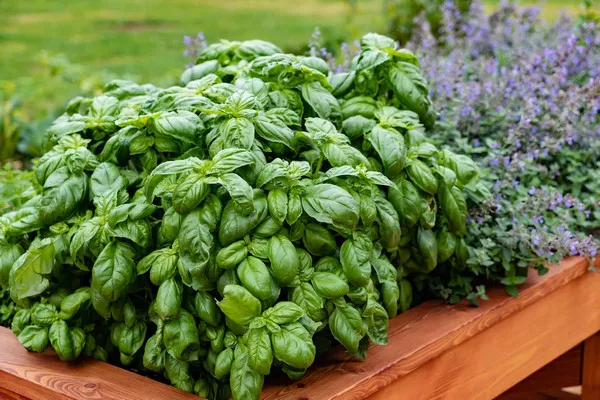In the ongoing quest for sustainable and environmentally friendly pest management solutions, biological pest control agents emerge as the unsung heroes of agriculture and ecosystem preservation. These natural allies, ranging from predators and parasitoids to microbial agents, play a crucial role in maintaining the delicate balance between organisms. In this article, we will explore various examples of biological pest control agents, highlighting their unique characteristics and contributions to the sustainable management of pests in diverse settings.
Predatory Insects: Nature’s Vigilantes
Predatory insects are formidable allies in the battle against pests, actively seeking out and consuming harmful organisms that threaten crops and ecosystems. One notable example is the ladybug, or ladybird beetle (Coccinellidae), renowned for its voracious appetite for aphids, mealybugs, and scale insects. Ladybugs are efficient predators that can significantly reduce pest populations, making them valuable assets in agricultural and horticultural settings.
Another formidable predatory insect is the lacewing (Chrysopidae), whose larvae are adept hunters of aphids, mites, and caterpillar pests. Lacewings contribute to biological pest control by consuming pests in their various life stages, acting as efficient guardians of crops.
Parasitoid Wasps: Nature’s Assassins
Parasitoid wasps are nature’s assassins, utilizing a gruesome yet effective strategy to control pest populations. Unlike parasites, which merely exploit hosts without causing immediate harm, parasitoids ultimately kill their hosts. One example is the braconid wasp (Braconidae), which parasitizes caterpillar pests. Female braconid wasps lay their eggs on or inside caterpillars, and the wasp larvae consume the host from the inside, eventually causing its demise.
Trichogramma wasps, another group of parasitoids, target the eggs of moth pests. These tiny wasps lay their eggs inside moth eggs, preventing the development of destructive caterpillars. The use of parasitoid wasps in biological pest control exemplifies nature’s intricate strategies for maintaining ecological balance.
See Also: How to trim and replant succulents?
Nematodes: Benevolent Soil Dwellers
Beneath the surface, nematodes—tiny, cylindrical worms—contribute to biological pest control by preying on soil-dwelling pests. Entomopathogenic nematodes, such as Steinernema and Heterorhabditis species, are particularly effective against insect larvae. These nematodes enter the pest’s body and release bacteria, which kill the host and provide nutrients for the nematodes to reproduce.
Entomopathogenic nematodes are used in agricultural settings to combat pests like caterpillars, grubs, and beetle larvae. By harnessing the natural predatory behavior of nematodes, biological control methods can target pests in the soil, reducing the need for chemical soil treatments.
Microbial Agents: Nature’s Disease Warriors
Microbial agents, including bacteria, viruses, and fungi, serve as nature’s disease warriors, delivering targeted blows to pest populations. Bacillus thuringiensis (Bt), a bacterium, produces toxins lethal to certain insect larvae, making it a potent biological insecticide. Bt formulations are widely used to control caterpillar pests in crops without harming beneficial insects, humans, or the environment.
Fungal species like Beauveria bassiana and Metarhizium anisopliae are entomopathogenic fungi that infect and kill various insect pests. These fungi adhere to the pest’s exoskeleton, penetrate the body, and eventually lead to the pest’s demise. This natural approach to pest control exemplifies the potential of microbial agents in managing pest populations sustainably.
Birds of Prey: Feathers as Pest Management Tools
Birds of prey, including raptors like hawks and owls, contribute to biological pest control by targeting rodents, insects, and other pests. Owls, in particular, are adept hunters of rodents that can cause damage to crops and stored grains. Encouraging the presence of birds of prey in agricultural landscapes provides a natural and sustainable method of controlling rodent populations, reducing the need for chemical rodenticides.
Barn owls, for example, are often encouraged in vineyards and orchards to keep rodent pests in check. Installing owl boxes in strategic locations provides nesting sites for these birds, creating a harmonious balance between agriculture and natural pest management.
Beneficial Microorganisms: Allies in the Soil
The soil harbors a diverse community of microorganisms that can be harnessed as allies in biological pest control. Mycorrhizal fungi form symbiotic relationships with plant roots, enhancing nutrient uptake and plant health. Healthy plants are more resilient to pests, creating a natural defense mechanism against infestations.
Trichoderma species, a group of beneficial fungi, exhibit antagonistic properties against soil-borne pathogens. These fungi can suppress diseases caused by harmful microorganisms, contributing to the overall health of plants and reducing the susceptibility of crops to pest attacks.
Conservation of Natural Enemies: Preserving Balance
In addition to deploying specific biological control agents, the conservation of existing natural enemies represents a crucial aspect of sustainable pest management. Encouraging the presence of beneficial insects like predatory beetles, spiders, and ground beetles in agricultural landscapes can naturally regulate pest populations.
For example, ground beetles (Carabidae) are voracious predators of various pests, including slugs, caterpillars, and weed seeds. These beetles contribute to biological pest control by patrolling fields and consuming pests that pose a threat to crops. Implementing agroecological practices that create habitats for these natural enemies enhances their presence and effectiveness in maintaining pest balance.
Integrated Pest Management (IPM): A Holistic Approach
While each biological pest control agent plays a specific role in managing pests, the true power lies in integrating these agents into a holistic approach known as Integrated Pest Management (IPM). IPM combines biological, cultural, mechanical, and chemical control methods to create resilient and sustainable pest management systems.
By carefully selecting and combining biological control agents with other pest management strategies, IPM maximizes efficacy while minimizing environmental impact. This comprehensive approach acknowledges the complexity of pest dynamics and emphasizes the importance of adapting strategies to specific agroecosystems and pest scenarios.
Conclusion
In the intricate tapestry of nature, biological pest control agents stand as formidable allies in the ongoing battle against pests. From predators and parasitoids to microbial agents and beneficial microorganisms, each agent contributes uniquely to the delicate balance of ecosystems and agricultural landscapes. As we continue to seek sustainable and environmentally friendly solutions to pest management challenges, the exploration and implementation of biological control methods underscore the potential for harmony between human activities and the intricate web of life.


